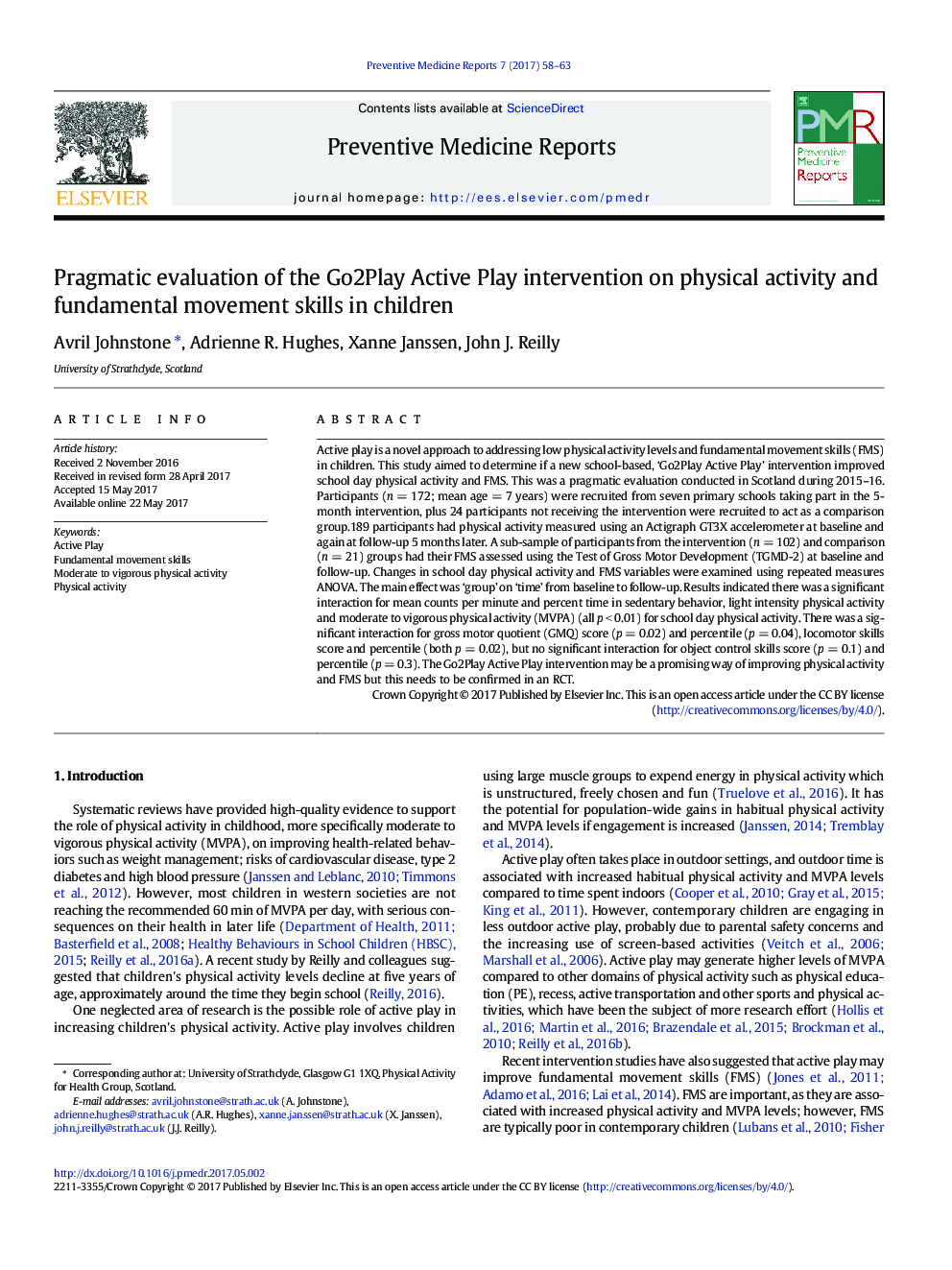| Article ID | Journal | Published Year | Pages | File Type |
|---|---|---|---|---|
| 5723704 | Preventive Medicine Reports | 2017 | 6 Pages |
â¢Active play is a promising way of increasing children's physical activity levels.â¢Active play is a promising way of improving children's fundamental movement skills.â¢Active play generates high levels of moderate to vigorous physical activity.â¢Active play emphasises fun, which is key to engaging children in physical activity.
Active play is a novel approach to addressing low physical activity levels and fundamental movement skills (FMS) in children. This study aimed to determine if a new school-based, 'Go2Play Active Play' intervention improved school day physical activity and FMS. This was a pragmatic evaluation conducted in Scotland during 2015-16. Participants (n = 172; mean age = 7 years) were recruited from seven primary schools taking part in the 5-month intervention, plus 24 participants not receiving the intervention were recruited to act as a comparison group.189 participants had physical activity measured using an Actigraph GT3X accelerometer at baseline and again at follow-up 5 months later. A sub-sample of participants from the intervention (n = 102) and comparison (n = 21) groups had their FMS assessed using the Test of Gross Motor Development (TGMD-2) at baseline and follow-up. Changes in school day physical activity and FMS variables were examined using repeated measures ANOVA. The main effect was 'group' on 'time' from baseline to follow-up. Results indicated there was a significant interaction for mean counts per minute and percent time in sedentary behavior, light intensity physical activity and moderate to vigorous physical activity (MVPA) (all p < 0.01) for school day physical activity. There was a significant interaction for gross motor quotient (GMQ) score (p = 0.02) and percentile (p = 0.04), locomotor skills score and percentile (both p = 0.02), but no significant interaction for object control skills score (p = 0.1) and percentile (p = 0.3). The Go2Play Active Play intervention may be a promising way of improving physical activity and FMS but this needs to be confirmed in an RCT.
